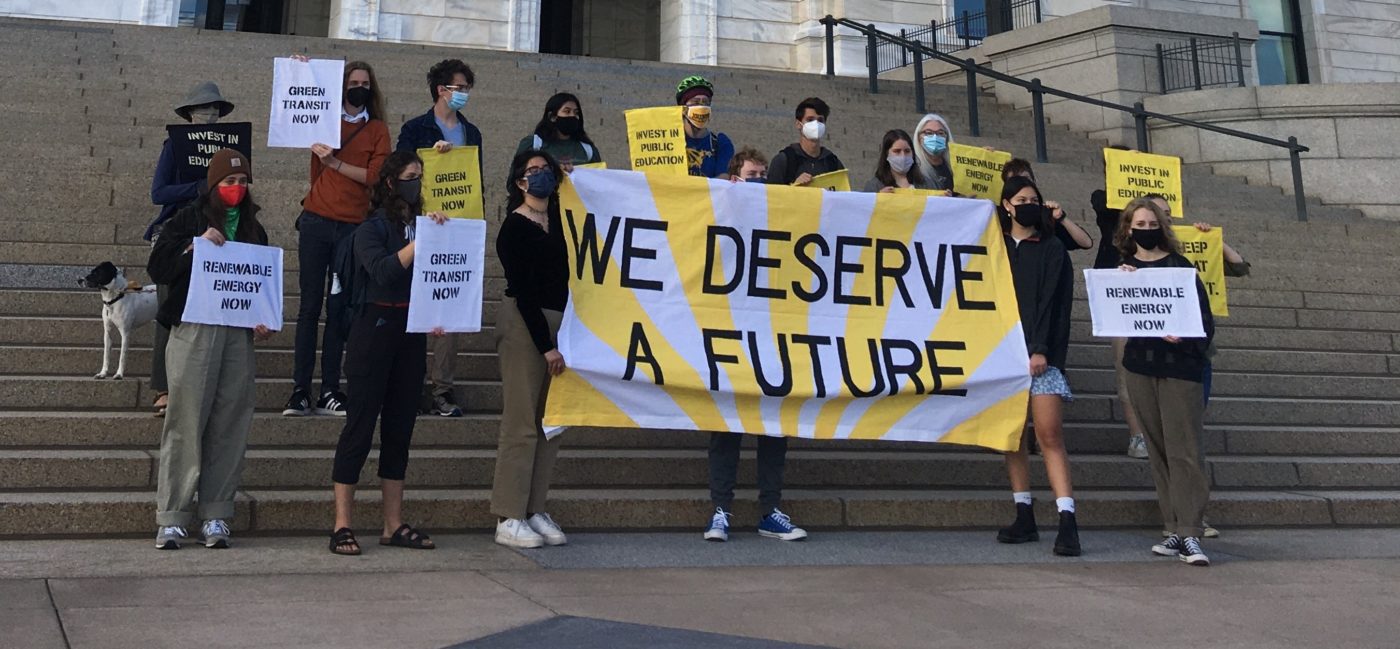Earth Day
“Other than public transport and non motorized transport, every other [climate] mitigation option evaluated had at least one feasibility dimension that represented a barrier or obstacle.”
– The Intergovernmental Panel on Climate Change, WGII AR6, 2022 (concluding chapter).
Starting in 1970, April 22 has been recognized by people across the United States—and now across the planet—as Earth Day. This recognition is designed to draw attention to environmental protection efforts and to spur action to secure a sustainable future.
In recent decades, Earth Day’s focus expanded to include climate concerns, in addition to traditional natural resource protections. On April 22, 2016, 120 countries signed the international Paris Climate Agreement. Yet since ratification of the Paris Agreement, the concentration of carbon in our atmosphere has risen from 404 parts per million to 417 parts per million, a stunning three percent increase in a few short years.
In the 12 months since our last Earth Day, the Intergovernmental Panel on Climate Change (“IPCC”) has issued three reports, all components of the monumental Sixth Assessment Report, which consolidates information about climate science, trends, scenarios, and possible actions. To be blunt, the reports are an indictment of human inaction; pathways to a stable future have narrowed substantially.
But—and this is crucial—the IPCC notes that “every tonne of CO₂ emissions adds to global warming” and that “there is a near-linear relationship between cumulative anthropogenic CO2 emissions and the global warming they cause.” Further, “with every additional increment of global warming, changes in extremes continue to become larger.” Summarized another way, every single thing we do to reduce greenhouse gas pollution matters, and the sooner we reduce emissions the better off we’ll be.
Here in Minnesota—and in the United States as a whole—transportation is the largest source of climate pollution. Only by immediately electrifying the transportation sector and shifting away from driving cars and light trucks can we adequately reduce transportation emissions to the degree, and at the speed, necessary. We know this at Move Minnesota, and it is a primary motivation for our work. This Earth Day, we want to share what the IPCC says about transit:
- “Strategies for established cities to achieve large GHG emissions savings include efficiently improving, repurposing or retrofitting the building stock, targeted infilling, and supporting non-motorized (e.g., walking, bicycling) and public transport.”
- “Compact cities… that support a modal shift away from private motor vehicles towards walking, cycling, and low-emissions shared, or public, transportation, passive energy comfort in buildings, and urban green infrastructure can… reduce urban energy use between 23-26% by 2050 compared to the business-as-usual scenario.”
Further—and crucially—the IPCC notes again and again throughout its reports how investments in public transportation and active transportation deliver broad intersectional benefits—and thus a just transition to a stable future. (In IPCC-speak, “it is possible to accelerate [climate] mitigation while addressing other developmental priorities by implementing measures that simultaneously address both climate and development goals.”)
- “Urban planning that combines clean, affordable public transportation, shared clean vehicles, and accessible active modes can improve air quality and contribute to healthy, equitable societies and higher wellbeing for all.”
- “Adapting roads for increased temperatures and investment in public transport are assessed as ‘no regret’ options [and] could reduce road repair and maintenance costs by 74%.”
- “Safe and convenient walking and cycling (and public transport) infrastructure in cities reduces carbon emissions and urban heat island intensity, but also improve cardiovascular capacity which reduces heat stress.”
- “Investments in public transport and transit-oriented development are… desired mitigation-adaptation interventions [because they] simultaneously reduce the vulnerability of low-income residents to climate shocks, prevent lock-ins into carbon-intensive development pathways and reduce poverty.”
- “Electrification combined with low GHG energy, and shifts to public transport can enhance health, employment, and can elicit energy security and deliver equity.”
Finally—and most incredibly—the IPCC report concludes that “other than public transport and non motorized transport, every other mitigation option evaluated had at least one feasibility dimension that represented a barrier or obstacle.” These barriers and obstacles include “economic, technological, institutional, socio-cultural, environmental/ecological, and geophysical” hurdles, “as well as relationships to [United Nations] sustainable development goals.” Stated another way, public transit and active transportation are the only climate mitigations with no significant downsides.
The IPCC reaffirms what our Move Minnesota community already knows: the fight for better and more comprehensive transit is necessary and right. We will keep fighting at every level of government until our communities have the transit they deserve. Thank you for being a critical part of these efforts.
All quotes were taken from one of the IPCC Sixth Assessment Reports, published in August 2021, February 2022, and April 2022.

